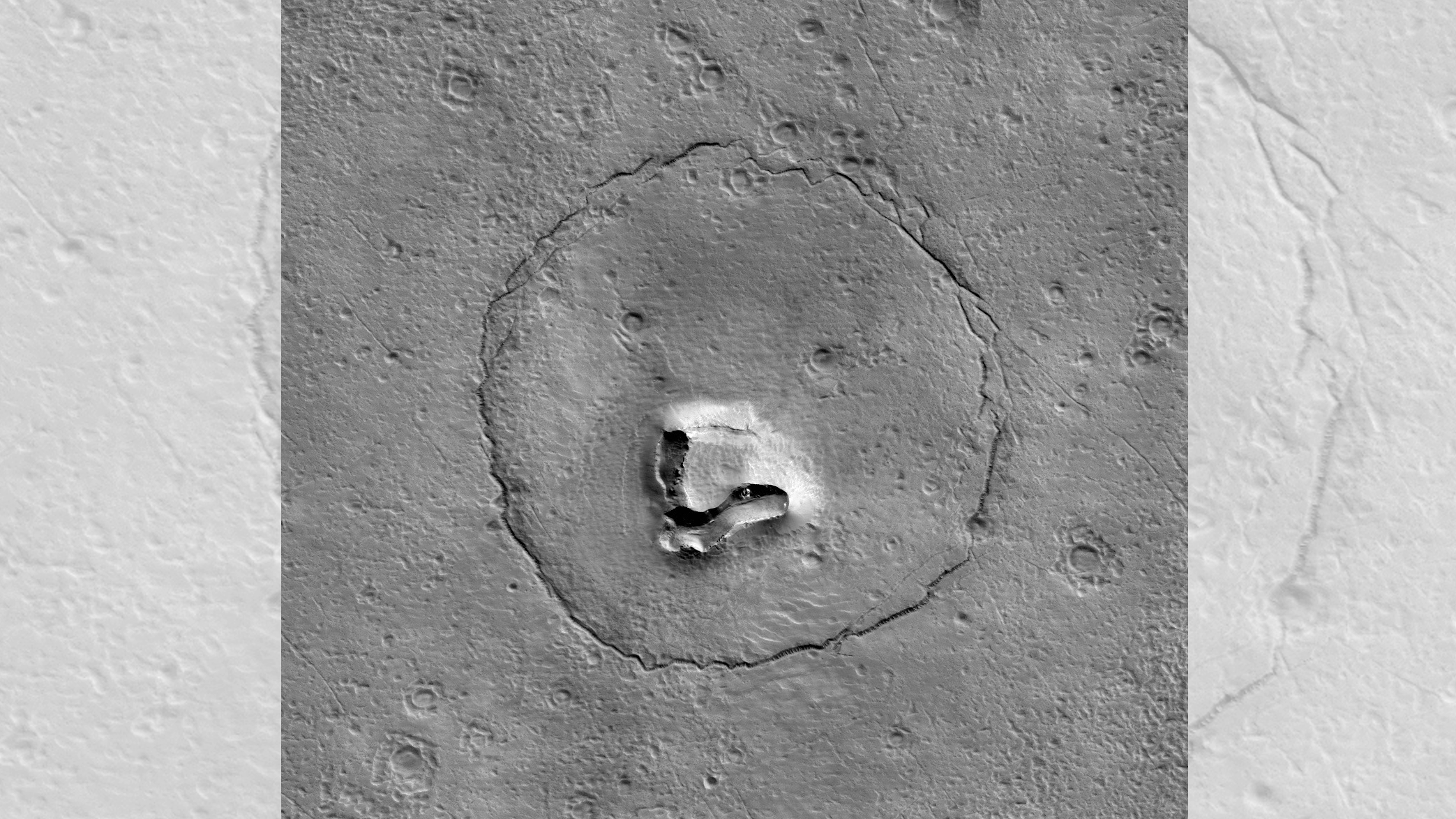NASA spies Martian rocks that look just like a teddy bear
A broken hill, an ancient crater and the human tendency to find faces everywhere may explain the teddy bear on Mars.

Scientists studying the surface of Mars recently found a piece of the rocky planet smiling back at them.
In an image shared Jan. 25 by The University of Arizona (UA), what appears to be the face of an enormous Martian teddy bear — complete with two beady eyes, a button nose and an upturned mouth — grins at the camera of NASA's Mars Reconnaissance Orbiter (MRO). According to UA, this photo of an uncanny assortment of geological formations was snapped on Dec. 12, 2022, as the MRO cruised roughly 156 miles (251 kilometers) above the Red Planet.
What's really going on here? It's likely just a broken-up hill in the center of an ancient crater, according to a statement posted to UA's High Resolution Imaging Science Experiment (HiRISE) camera blog.
"There's a hill with a V-shaped collapse structure (the nose), two craters (the eyes), and a circular fracture pattern (the head)," the statement reads. "The circular fracture pattern might be due to the settling of a deposit over a buried impact crater."
Viewers may see a bear's face emerge from a collection of dusty rocks and crevices thanks to a phenomenon called pareidolia, a psychological tendency that leads people to find significance in random images or sounds.
Space provides endless fodder for pareidolia. Take this nebula (a random outflow of gas and dust) that sort of looks like the city-smashing monster Godzilla, or this Martian rock formation that NASA briefly mistook for the meeping Muppet Beaker.
Both Beaker and the newly discovered Martian teddy bear were imaged by HiRISE, which is one of six science instruments on board the MRO. HiRISE has been snapping pictures of the Red Planet from orbit since 2006 and, according to UA, is the most powerful camera ever sent to another planet.
Sign up for the Live Science daily newsletter now
Get the world’s most fascinating discoveries delivered straight to your inbox.
More incredible images — and perhaps more cuddly-wuddly faces — surely await just over the Martian horizon.

Brandon is the space/physics editor at Live Science. His writing has appeared in The Washington Post, Reader's Digest, CBS.com, the Richard Dawkins Foundation website and other outlets. He holds a bachelor's degree in creative writing from the University of Arizona, with minors in journalism and media arts. He enjoys writing most about space, geoscience and the mysteries of the universe.










